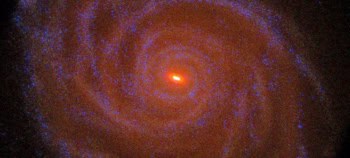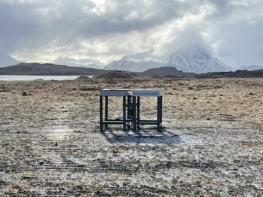After two decades in space, the Cassini mission will come to a dramatic end today (15 September) as the craft is deliberately hurled into Saturn’s atmosphere, where it will burn up on entry. According to mission scientists, Cassini will continue to collect valuable scientific data throughout this final act, from which we could learn about the planet’s atmosphere. This finale will also avoid the unlikely event that Cassini crashes into one of Saturn’s moons in the future – Titan and Enceladus could both contain habitable environments that could be contaminated by the wreckage.
“We’ve all known this day was coming for a long time, but it seems strangely unreal at the moment,” says mission scientist Joshua Colwell. “There’s a community of people associated with this mission that will gradually dissolve, so it’s a sad day for me, but also one to marvel at the voyage and what we’ve learned and still have to learn from the observations sent back by this robot explorer that has been reliable to the end.”
Having launched in October 1997, the US–European mission entered orbit around Saturn in 2004. One of its crucial early milestones was to deliver the European Space Agency’s Huygens probe to Saturn’s moon Titan – the only landing ever made on a body in the outer solar system. Data transmitted back to Earth from the Cassini–Huygens mission over the past 13 years has transformed our understanding of Saturn and its moons.
So long, and thanks for all the data
Since its launch, the craft has travelled eight billion kilometres, completed 162 targeted fly-bys of Saturn’s moons, and captured almost half a million images. Among its achievements are the discovery of liquid-methane seas on Titan, and the discovery of geysers on the surface of Enceladus, which indicate that liquid water is reaching the moon’s surface due to hydrothermal activity. To date, nearly 4000 papers have been published involving data from the Cassini–Huygens mission.
With the spacecraft now running low on fuel, mission scientists decided to embark Cassini on one final sacrificial mission. Its so-called Grand Finale began in the final few days of April this year, when it embarked on a five-month series of plunges into the space between Saturn and its rings. These daring dives could provide vital information about the nature and origin of the rings.
Writing in a feature article for the September issue of Physics World, Colwell puts this opportunity in its historical significance: “Saturn’s interior may still be hidden from view, but astronomers have been gazing at its rings – one of the most striking features in our solar system – since the 1600s, and it has long been an embarrassment to me that I’m unable to answer two basic questions about them: how old are they and where did they come from?”
Performing until the fiery end
At around midday UTC today the 212 kg craft will plummet into Saturn’s atmosphere, burning up like a meteor. Connection will be lost shortly before as friction will make it impossible for the spacecraft to maintain a connection with the Earth. Data collected in these death throes from the craft’s mass spectrometer could reveal vital information about the composition of Saturn’s atmosphere.
Colwell says that he will be spending the day in Pasadena with members of his team, which worked on Cassini’s Ultraviolet Imaging Spectrograph. “It’s an unfortunate bit of celestial timing that we lose the spacecraft at about five in the morning here in Pasadena. What a way to start the day!” he says.
Colwell is now turning his attention to developing a CubeSat mission to perform experiments in Earth orbit to study collisions in planetary rings and in the protoplanetary disc. Meanwhile, many Cassini mission scientists are expected to join the ranks of the Europa Clipper mission. This NASA mission planned for launch in the 2020s will make multiple fly-bys of Jupiter’s ocean moon to investigate its possible habitability, using lessons learned from the way Cassini has explored Saturn.



